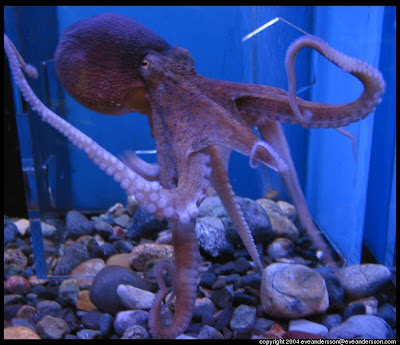
Subscribe to:
Post Comments (Atom)

Many species of octopus are eaten as food by human cultures around the world. The arms and sometimes other parts of the body are prepared in various ways, often depending on the species being eaten.
Care must be taken to boil the octopus properly, to rid it of slime and the smell, as well as any residual ink.
Octopus is a common ingredient in Japanese cuisine, including sushi, takoyaki, and Akashiyaki. Some small species are sometimes eaten alive as a novelty and health food (mostly in South Korea). Similarly, a live octopus may be sliced up and the legs eaten while still squirming, which they continue to do for some minutes.
Octopus is also eaten regularly in Hawai'i, many of the popular dishes being Asian in origin. Locally known by their Hawaiian or Japanese names, ("he'e" and "tako" respectively) octopus is also a popular catch used as fish bait.
Octopus is also a common food in Mediterranean cuisine and Portuguese cuisine. In Galicia, polbo á feira (fair style octopus) is a local delicacy. Restaurants which specialize or serve this dish are known as pulperías.
According to the USDA Nutrient Database (2007), cooked octopus contains approximately 139 calories per three ounce portion, and is a source of vitamin B3, B12, potassium, phosphorus, and selenium.[34]


1 comment:
nice work misses!!!!!!!!!!!!!!!!!!!!
from Zara!!!!!!!!!!!!!!!!!!!!!!!!!!!!!!!!!
Post a Comment